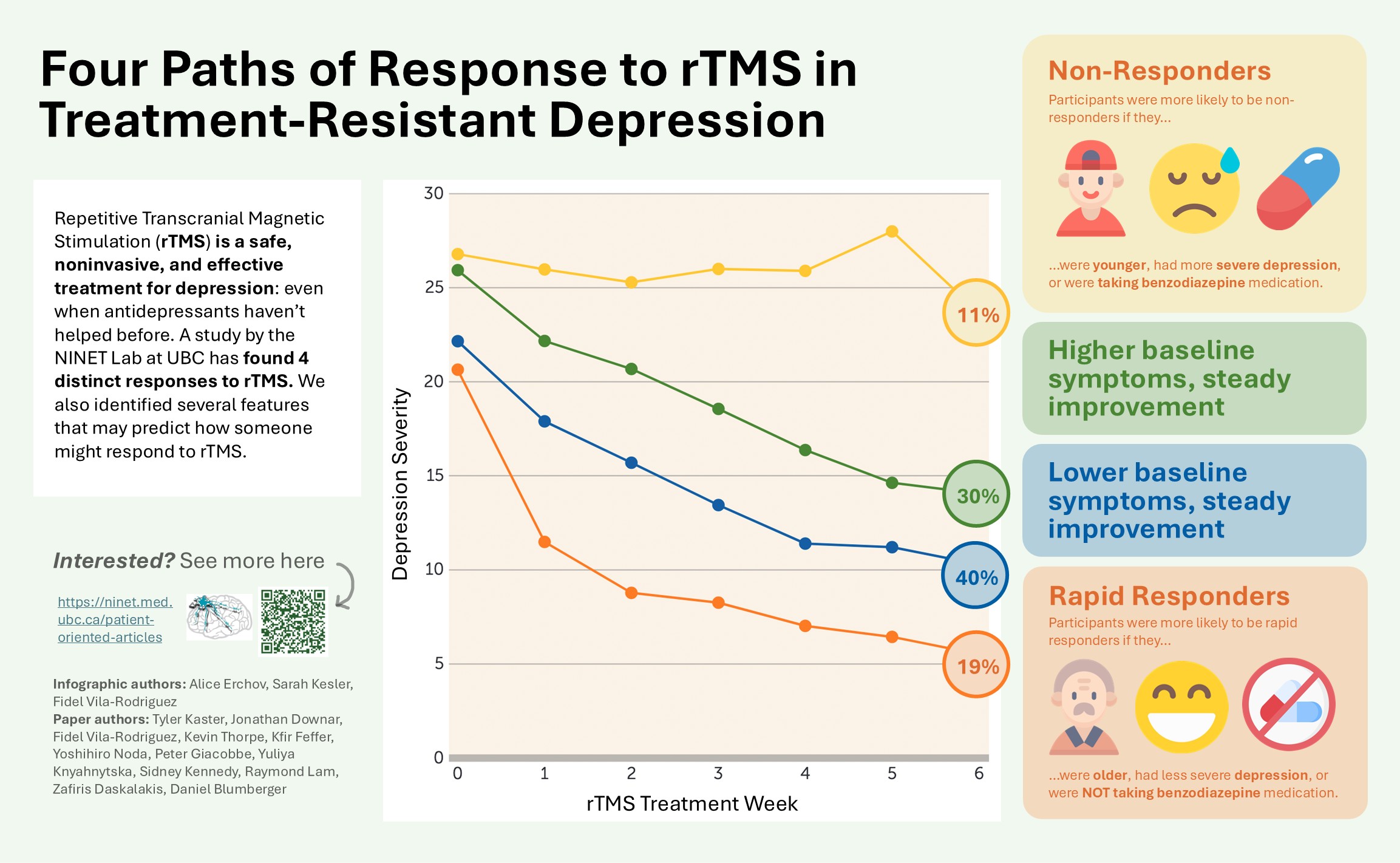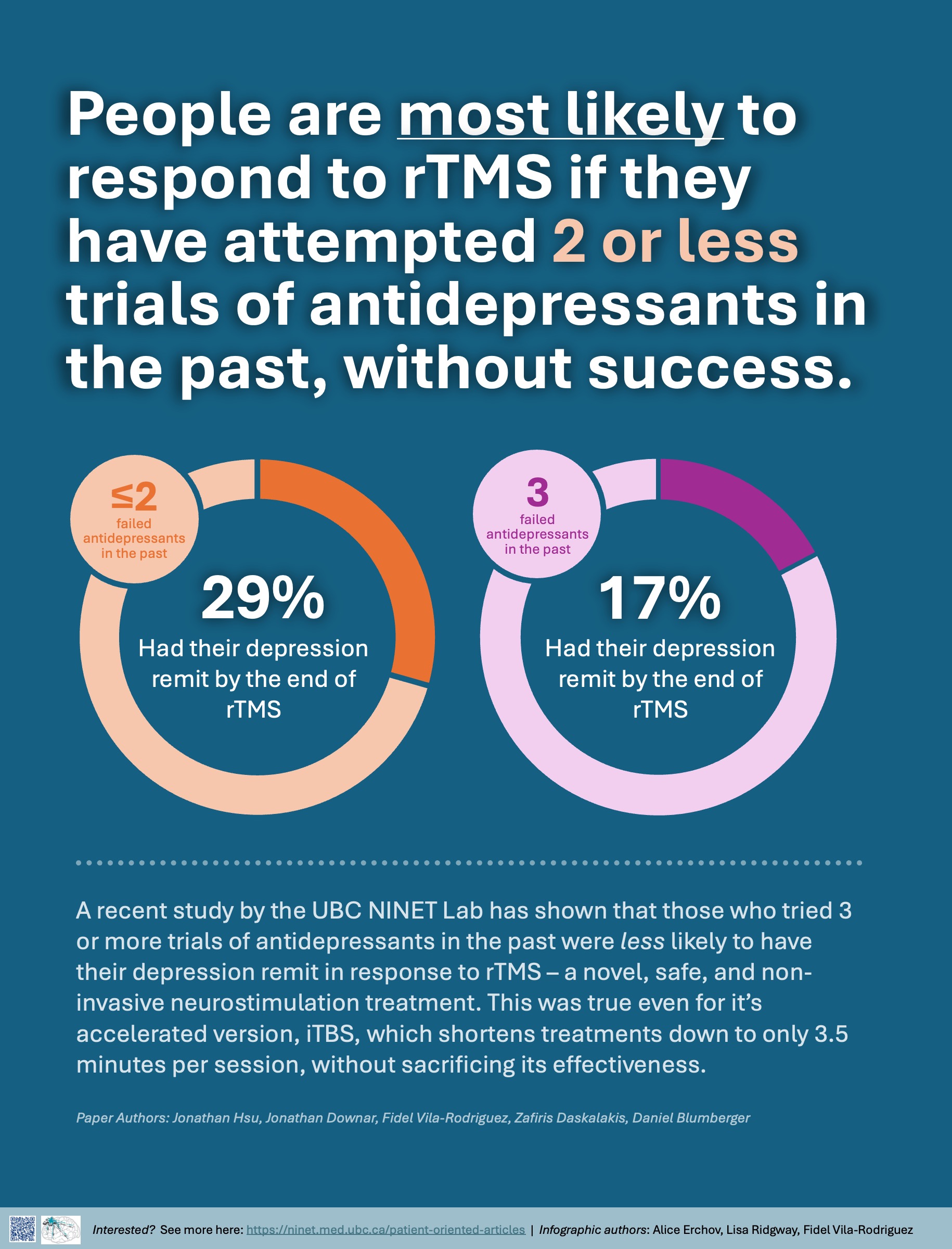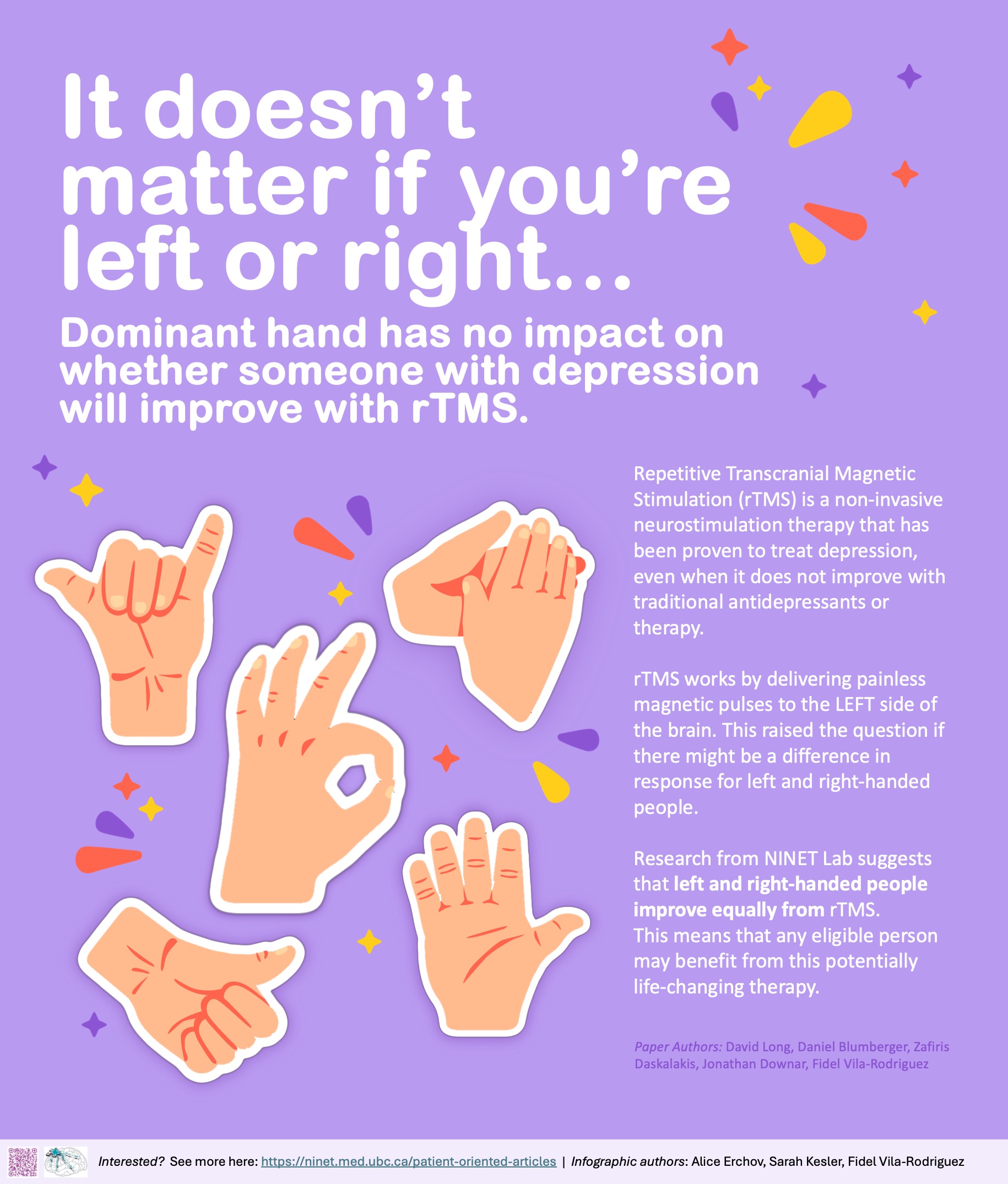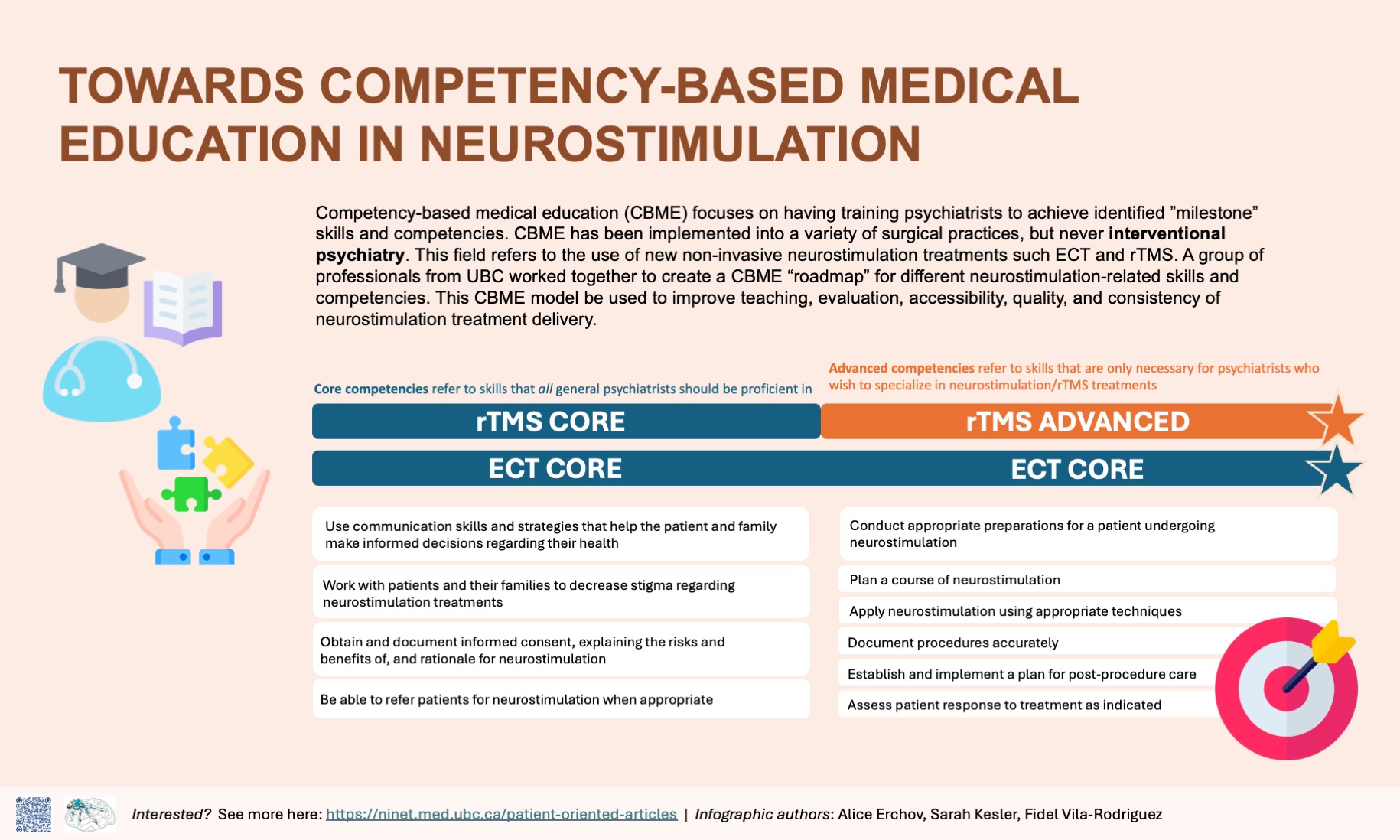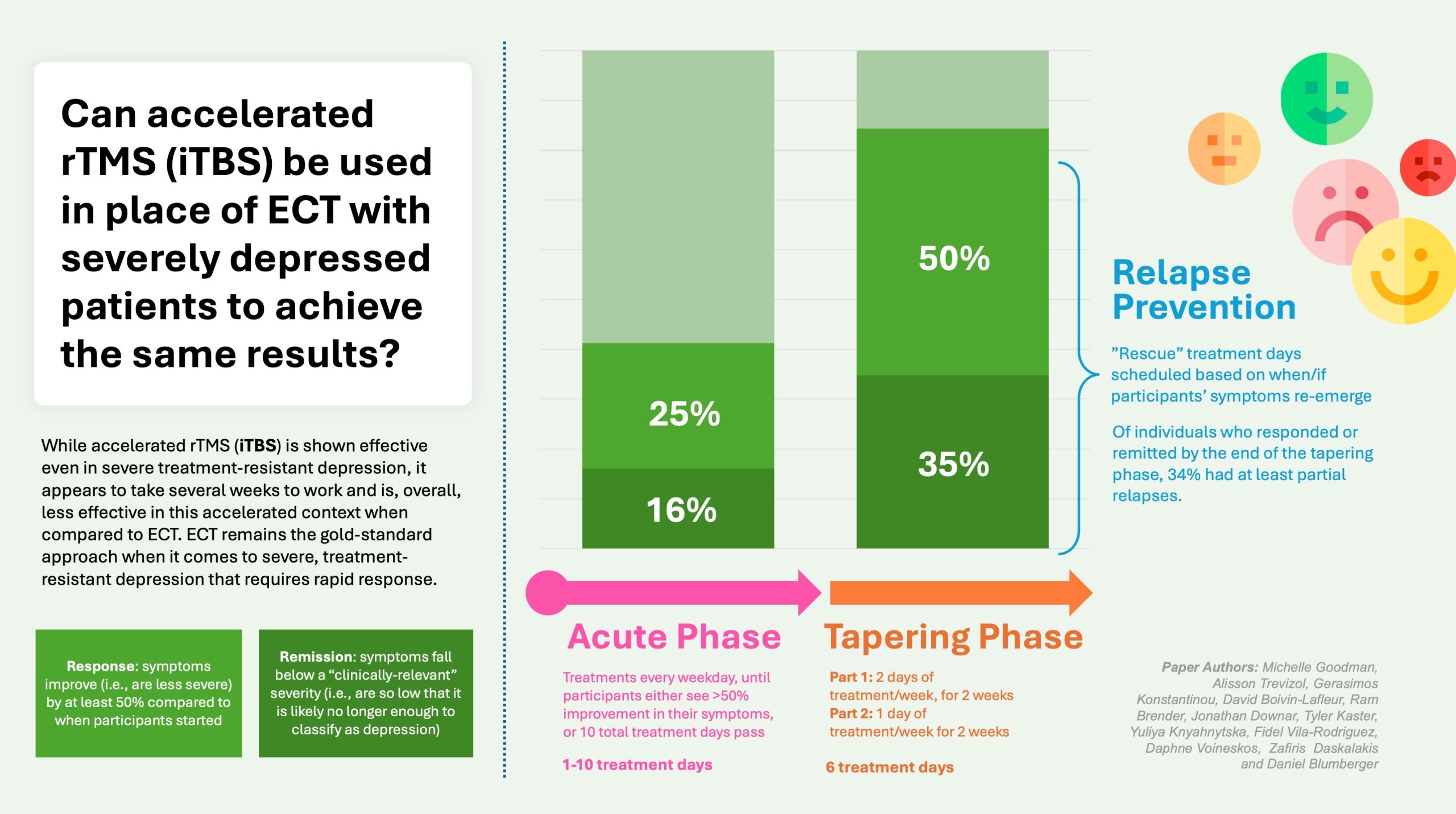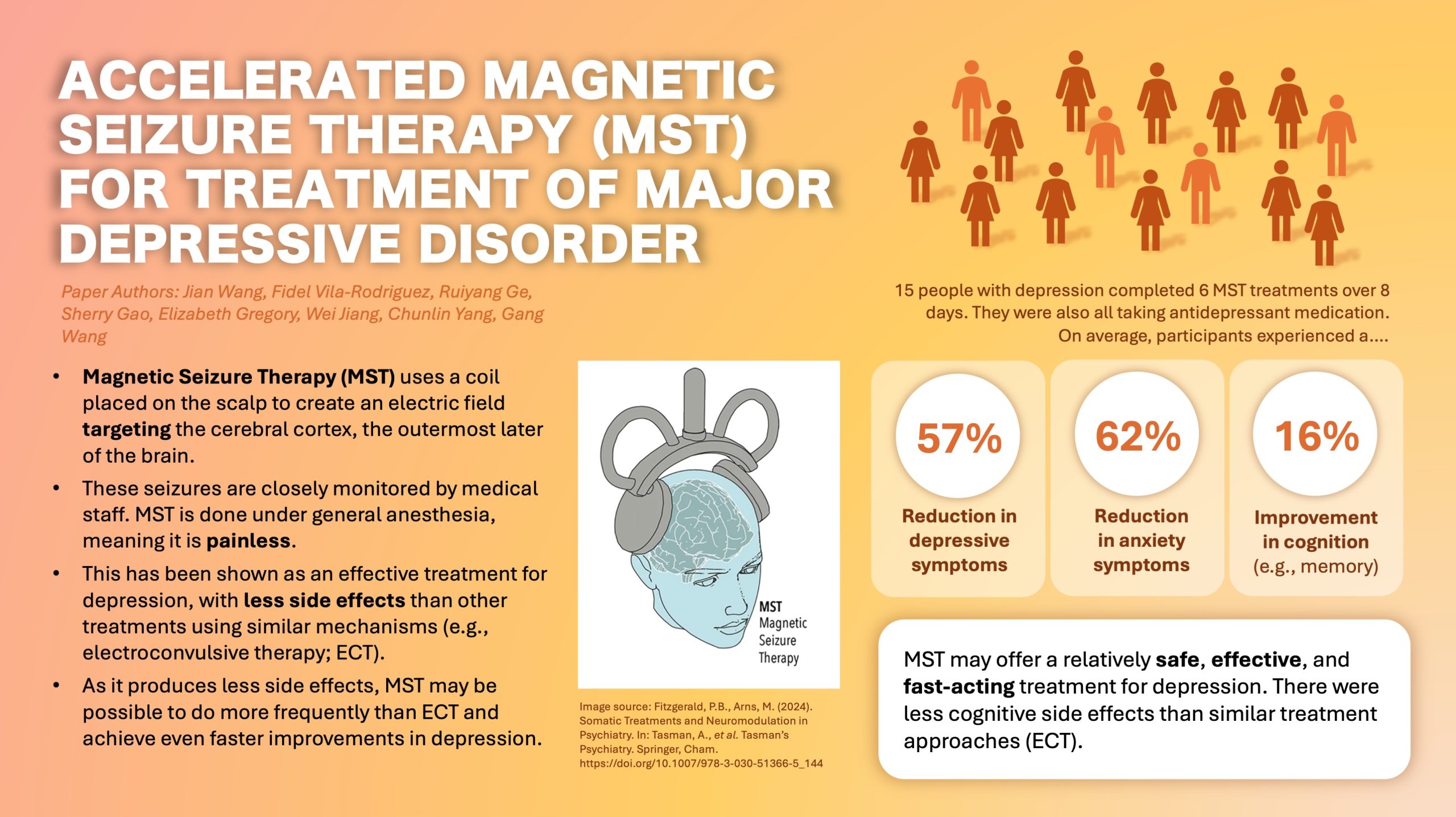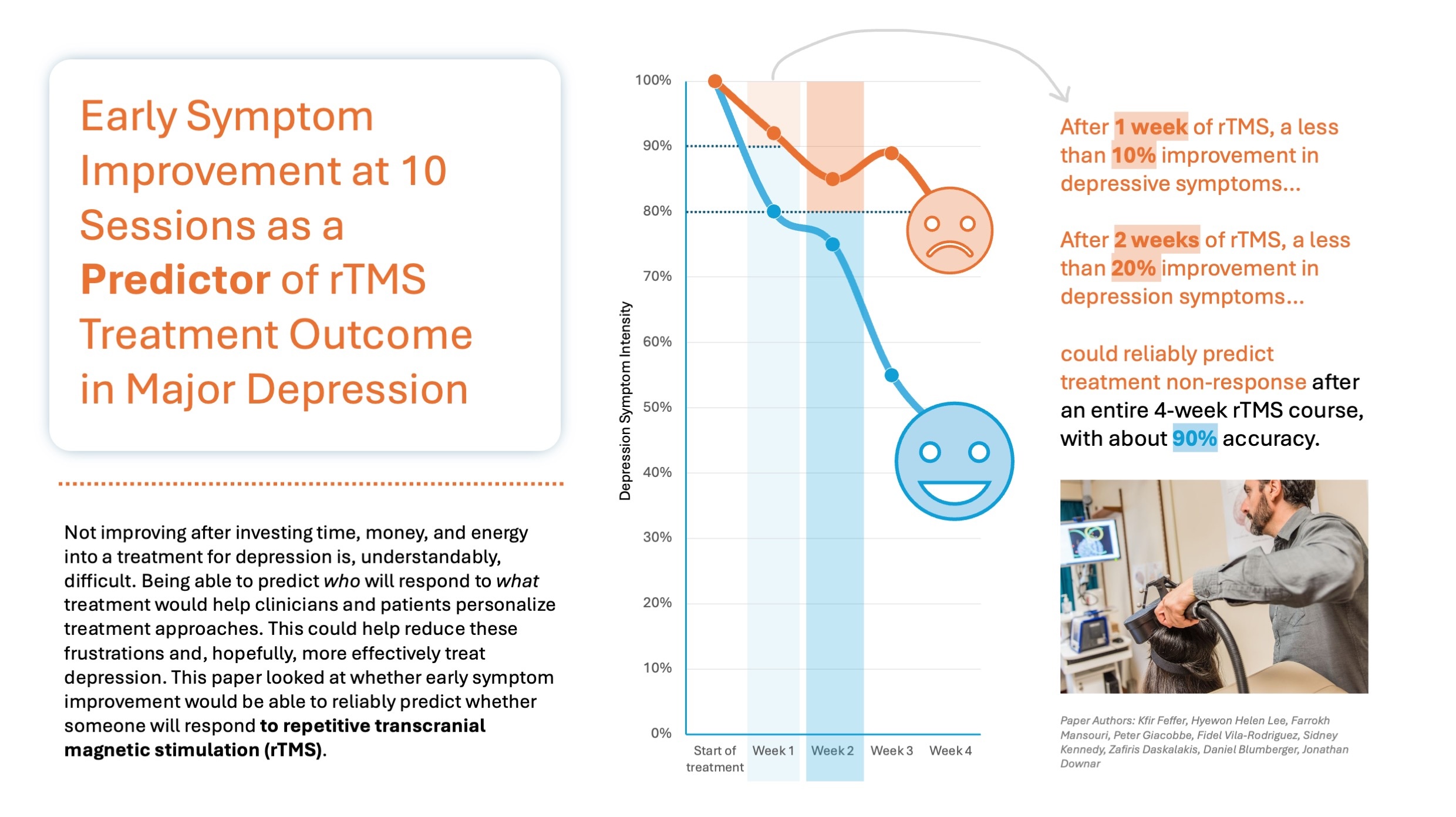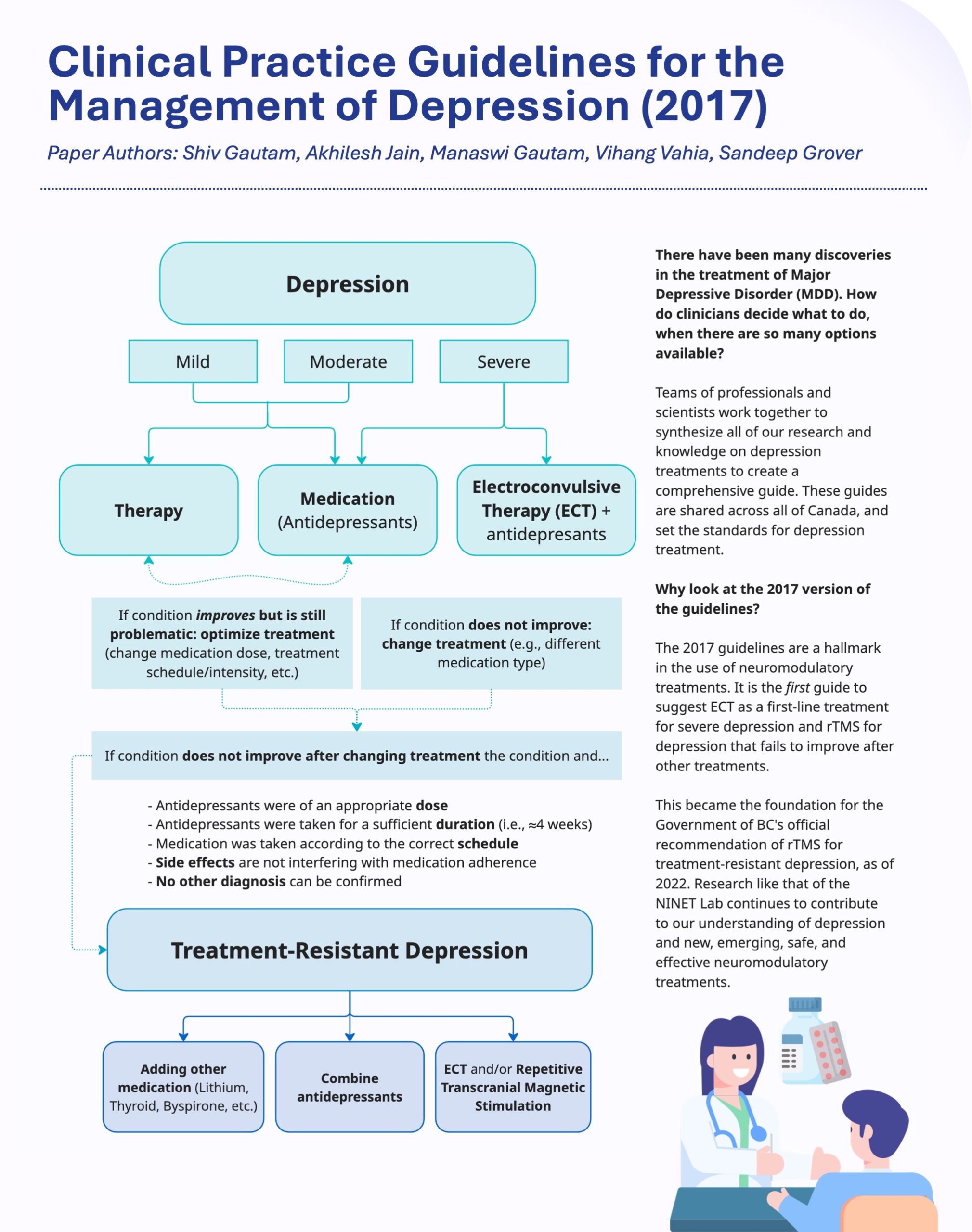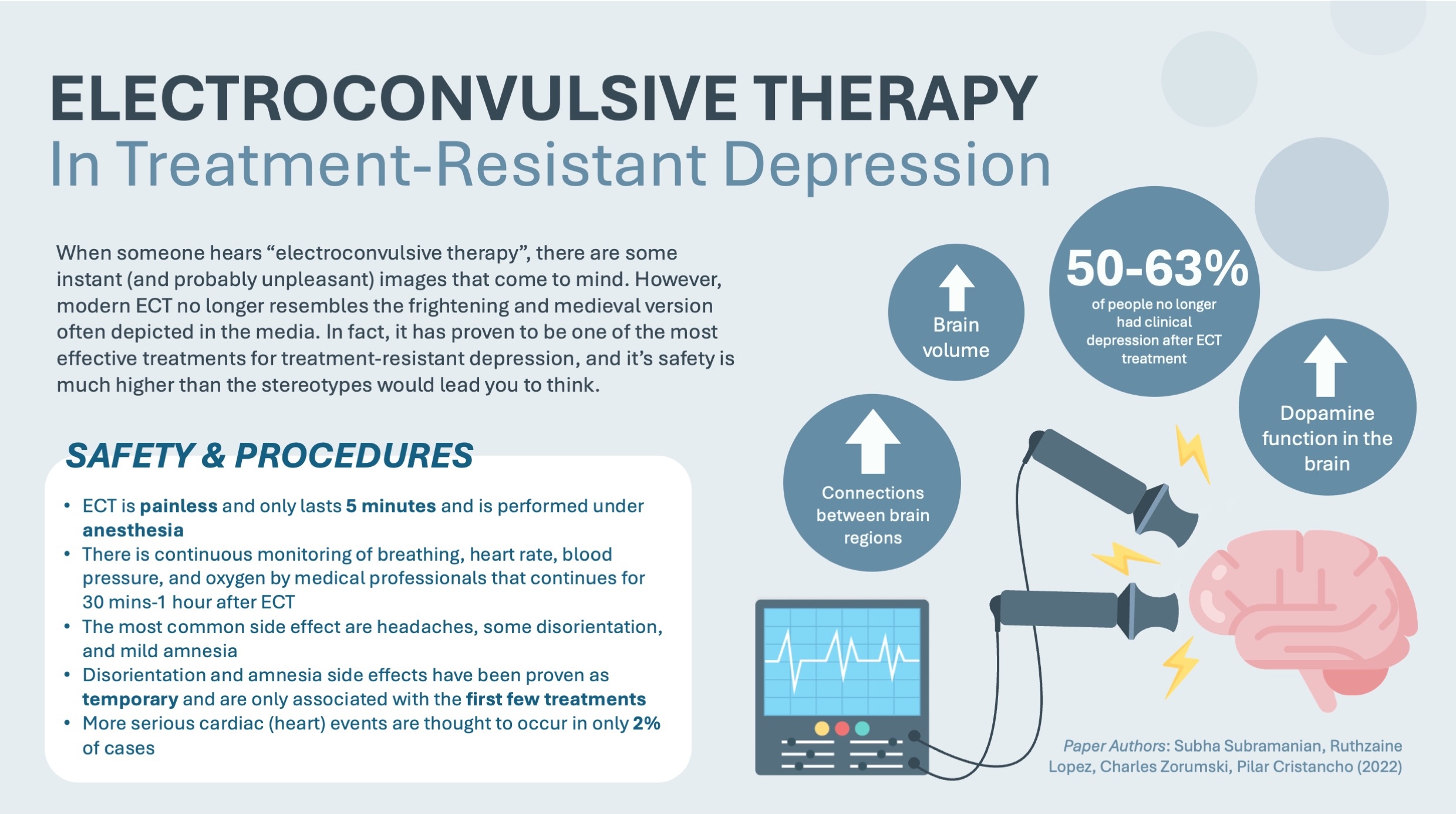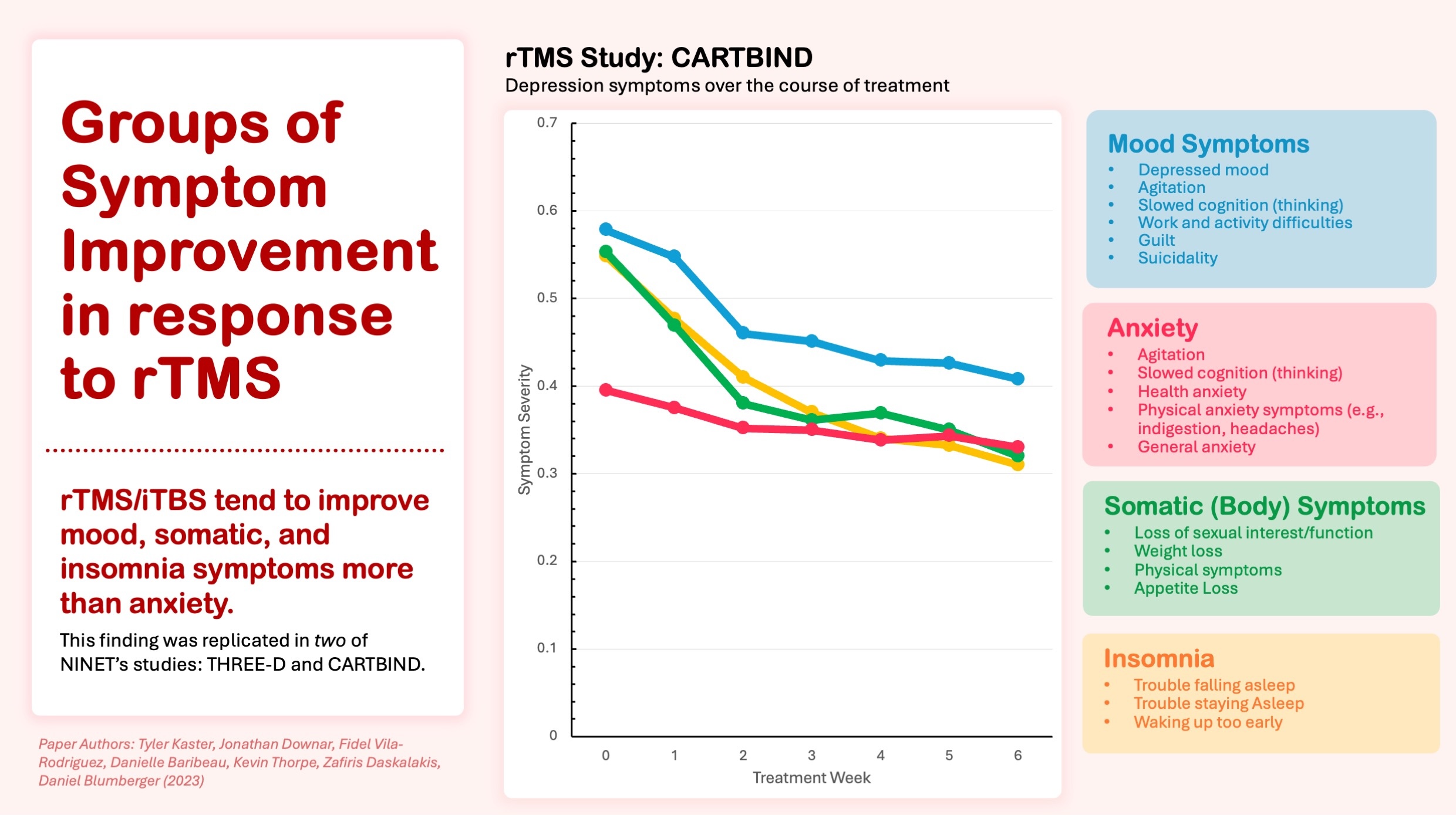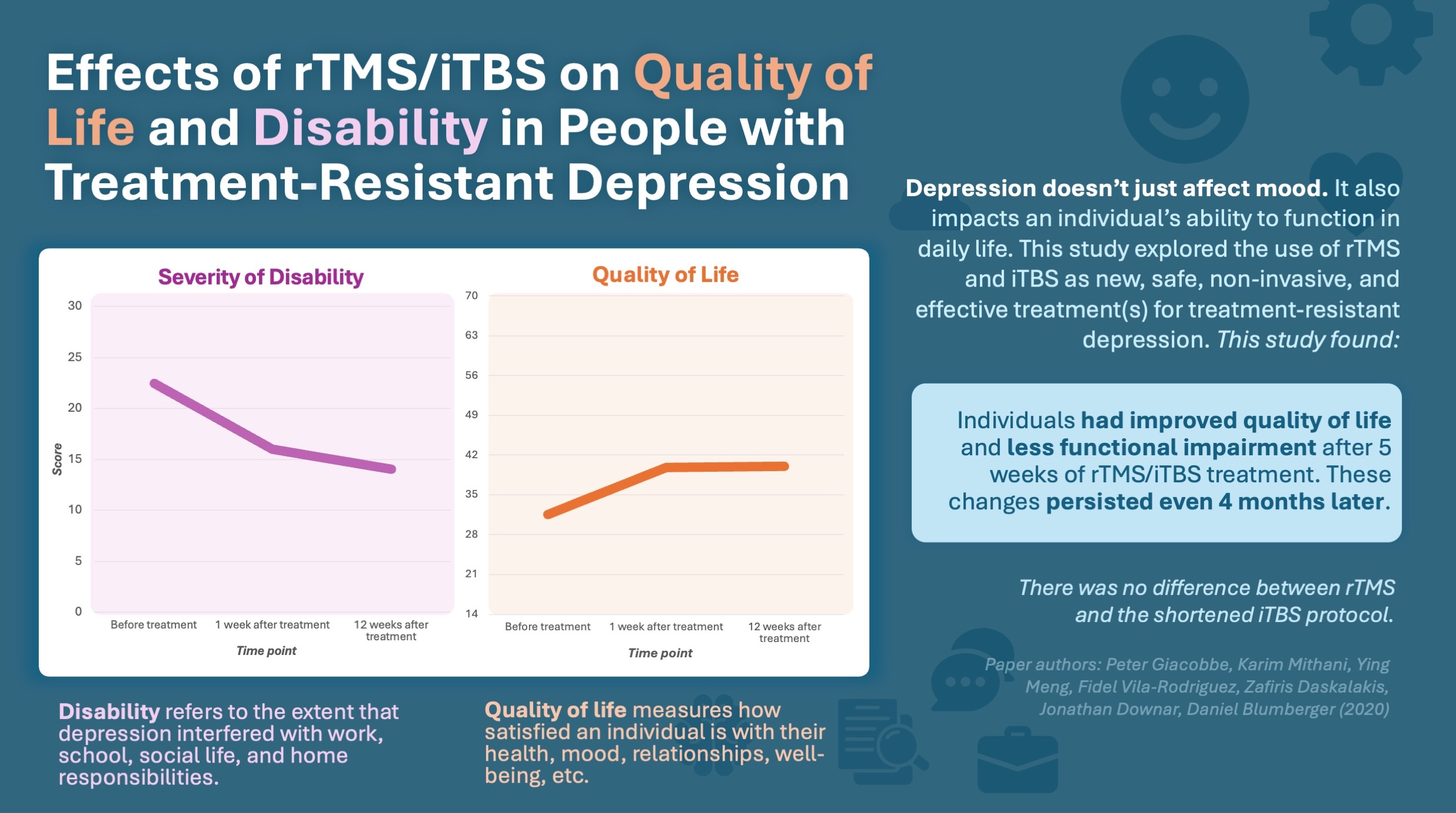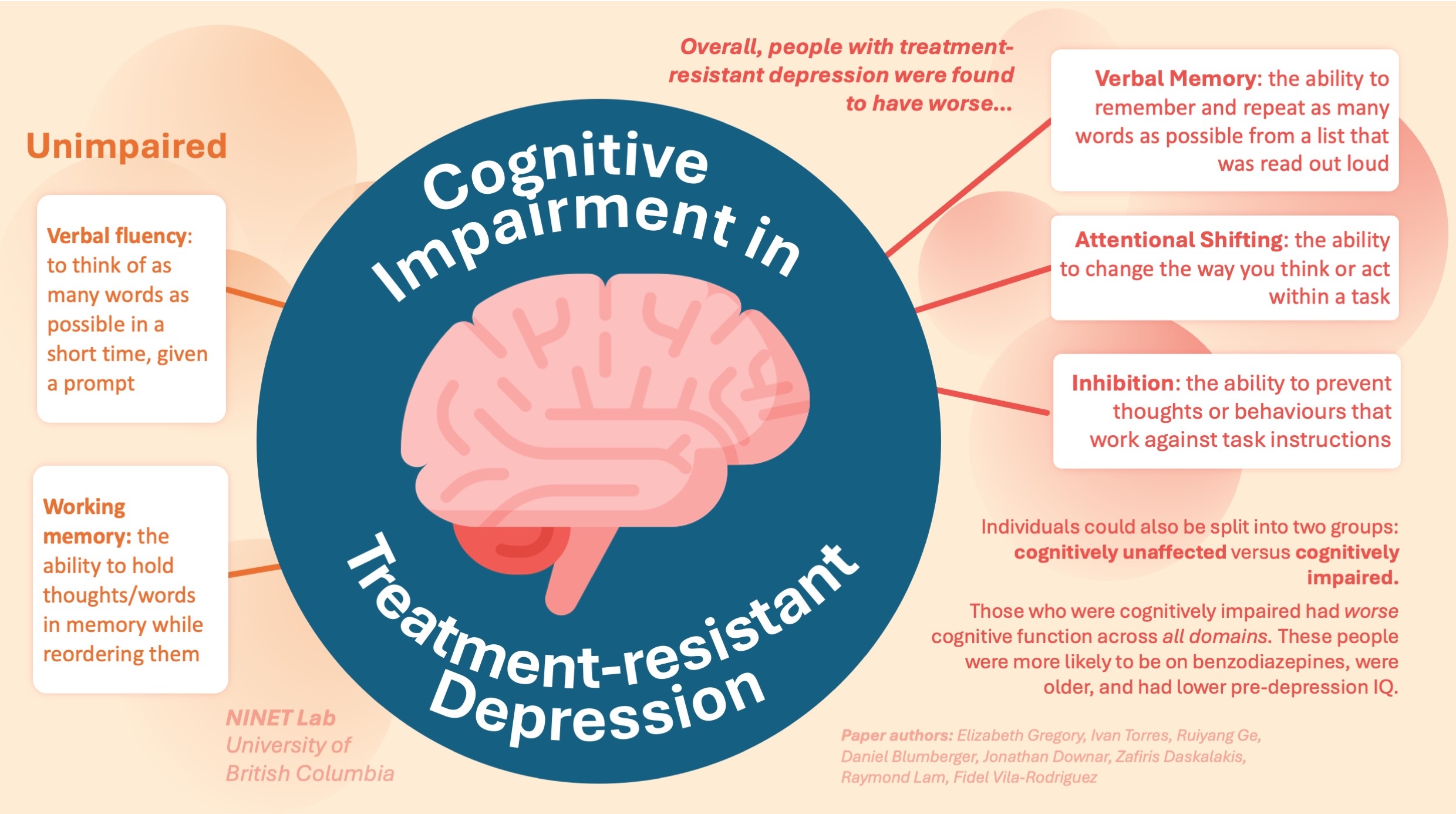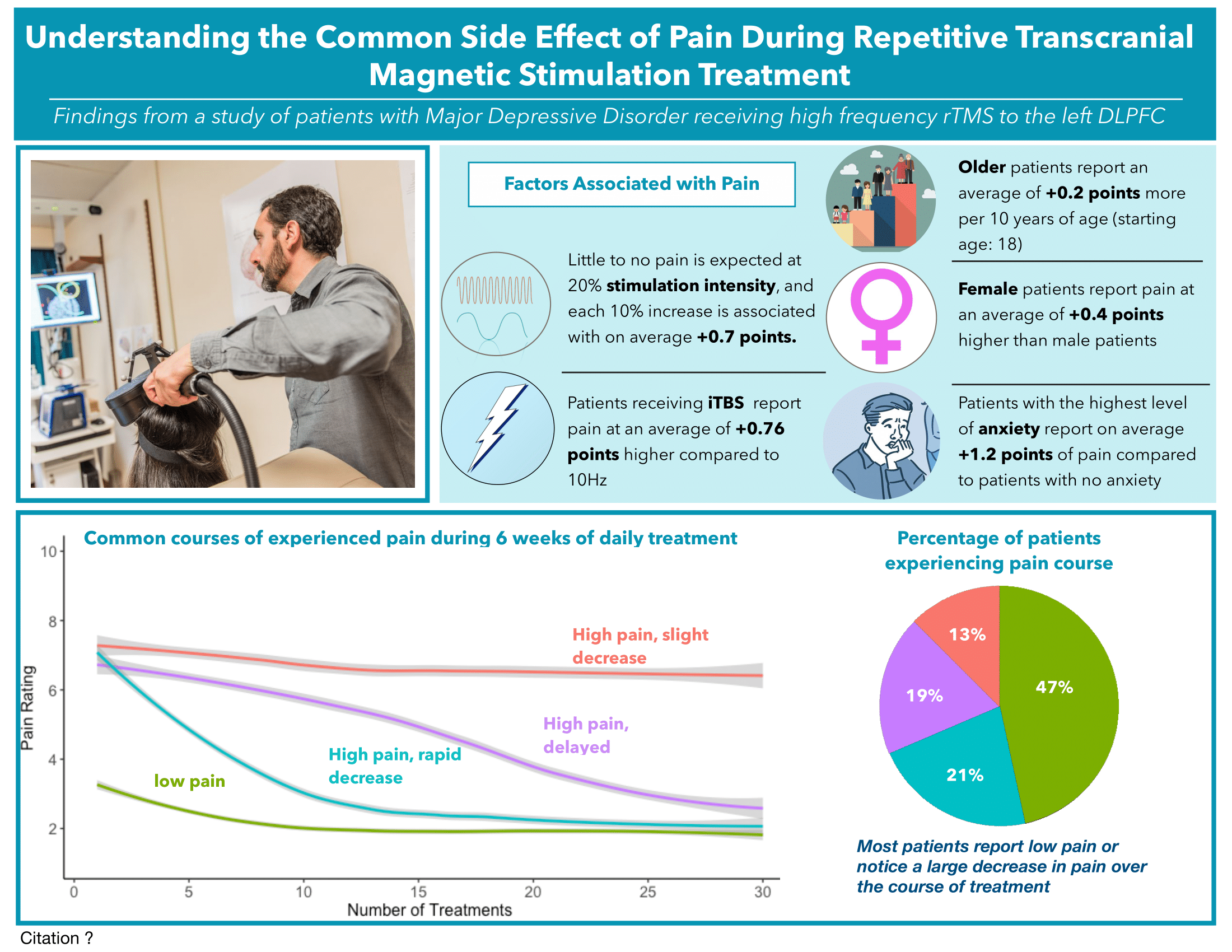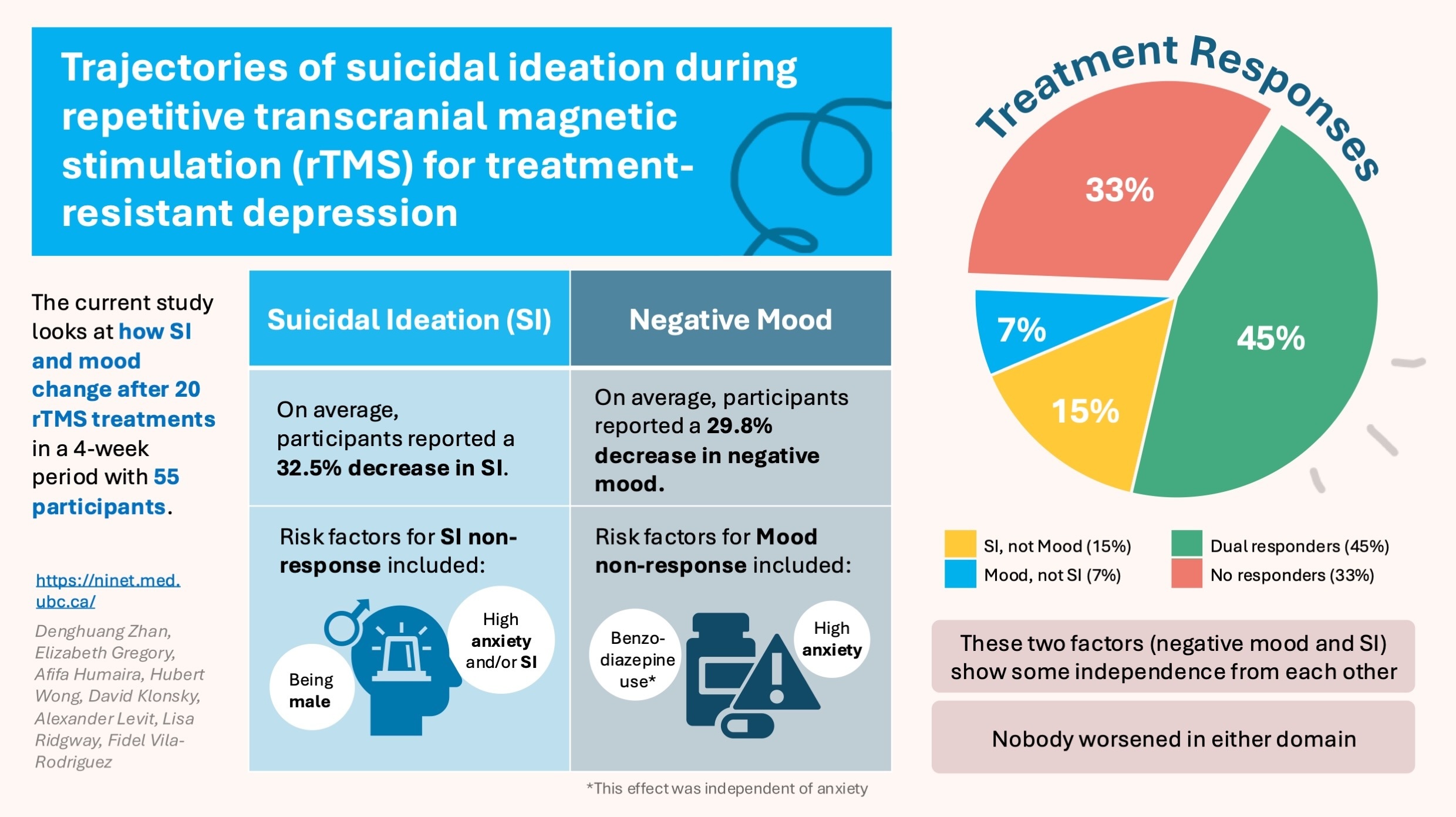
Patient-Oriented Articles


Are you someone who is considering or receiving neurostimulation treatments? Have you been wanting to learn more, but finding it hard to find clear, informative, and engaging information?
For years, the NINET Lab has studied and published scientific articles on electroconvulsive therapy (ECT), repetitive transcranial magnetic stimulation (rTMS), and magnetic seizure therapy (MST). The aim of our work has been to increase our knowledge and use of these novel treatments, which are capable of helping even severe forms of psychiatric conditions (e.g., schizophrenia, depression) that don’t respond to first-line treatments.
However, the articles that publish this research are often inaccessible due to their scientific language or financial barriers. But with the help of our patient partner, knowledge translation consultant, and a generous grant from the The Michael Smith Health Research BC Reach Program, the NINET Lab has begun this project to translate these text-heavy articles into summaries and infographics that anyone can understand.
We hope this project can help raise awareness about the potential of interventional brain stimulation, empower people to make informed decisions about their psychiatric care, and assist in the shaping of public policy.
-
Four Paths of Response to rTMS in Treatment-Resistant Depression
Read more: Four Paths of Response to rTMS in Treatment-Resistant DepressionrTMS treatment outcomes are very diverse. Some may improve almost instantly, others may require a higher number or intensity of treatments, and others may not respond at all. Understanding the diversity of rTMS treatment responses can be important in order for clinicians and patients to find the best, personalized treatment approach for their depression. The aim of this study was to describe the number and pattern of unique pathways (i.e., trajectories) of improvement to rTMS among a large group of people with treatment-resistant depression.
-
People are most likely to respond to rTMS if they have attempted less than 3 trials of antidepressants in the past, without success
Read more: People are most likely to respond to rTMS if they have attempted less than 3 trials of antidepressants in the past, without successInterestingly, the likelihood to respond (i.e., improve) with antidepressants is thought to decrease with every attempt. It is unclear whether someone’s past history with antidepressants affects the likelihood for someone to respond to rTMS or iTBS in the future. Knowing who might benefit most from neurostimulation therapies can help clinicians and patients understand the best treatment route for them.
-
LEFT and RIGHT-handed people with treatment-resistant depression improve equally with rTMS
Read more: LEFT and RIGHT-handed people with treatment-resistant depression improve equally with rTMSInterestingly, handedness (i.e., whether an individual is right or left handed) might indicate which side of the brain/body is more dominant. Potentially, this could affect the intensity of stimulation that left or right-handed people need. Additionally, rTMS is delivered to the left side of an individual’s head. This region of the brain controls the right side of your body — raising the question as to whether rTMS is equally effective for left and right-handed people. This could have important impacts for depression treatment.
-
Towards Competency-Based Medical Education in Neurostimulation
Read more: Towards Competency-Based Medical Education in NeurostimulationCompetency-based medical education (CBME) is an emerging model of training for medical students. Instead of relying simply on the time spent in residency, CBME focuses on having residents achieve necessary skills such that they would be able to perform competently (successfully) and independently in their selected specialties. A group of residents, academic faculty, and clinical faculty at the University of British Columbia (UBC) have come together to create a roadmap as to how to apply CBME specifically to interventional psychiatry – which includes the practice of electroconvulsive therapy and rTMS.
-
Who may be most likely to benefit from repetitive transcranial magnetic stimulation (rTMS)?
Read more: Who may be most likely to benefit from repetitive transcranial magnetic stimulation (rTMS)?Even though repetitive transcranial magnetic stimulation (rTMS) is largely effective at treating depression even for those who do not respond to antidepressants, there is still a fraction of individuals who do not improve with rTMS. Predicting who may respond best to rTMS may help clinicians and patients make better choices as to what treatments to pursue, with the ultimate hope to better treat depression. Trevizol et al. (2020) used data from a clinical trial run by the NINET Lab at UBC called THREE-D to determine if there are characteristics that can help predict whether someone would benefit from rTMS.
-
Can accelerated rTMS (iTBS) be used in place of ECT with severely depressed patients to achieve the same results?
Read more: Can accelerated rTMS (iTBS) be used in place of ECT with severely depressed patients to achieve the same results?Paper authors: Michelle Goodman, Alisson Trevizol, Gerasimos Konstantinou, David Boivin-Lafleur, Ram Brender, Jonathan Downar, Tyler Kaster, Yuliya Knyahnytska, Fidel Vila-Rodriguez, Daphne Voineskos, Zafiris Daskalakis, Daniel Blumberger Year of paper publication: 2025 Post authors: Alice Erchov, Sarah Kesler, Fidel Vila-Rodriguez Download the research article: Goodman et al. (2025) Extended course accelerated intermittent theta burst stimulation as […]
-
Accelerated magnetic seizure therapy (aMST) for treatment of major depressive disorder: A pilot study
Read more: Accelerated magnetic seizure therapy (aMST) for treatment of major depressive disorder: A pilot studyElectroconvulsive therapy (ECT) is often the recommendation for severe and treatment-resistant depression. However, treatments need to be spaced out over long periods of time to prevent cognitive side effects. Magnetic seizure therapy (MST) uses magnetic—not electrical—stimulation to similarly treat depression. Because of its unique approach and less side effects when compared to ECT, researchers wonder if MST treatments can be safely and effectively accelerated to reduce treatment time.
-
Early symptom improvement at 10 sessions as a predictor of rTMS treatment outcome in major depression
Read more: Early symptom improvement at 10 sessions as a predictor of rTMS treatment outcome in major depressionNot improving after investing time, money, and energy into a treatment for depression is, understandably, difficult. Being able to predict who will respond to what treatment would help clinicians and patients personalize treatment approaches. This could help reduce these frustrations and, hopefully, more effectively treat depression. This paper looked at whether early symptom improvement would be able to reliably predict whether someone will respond to repetitive transcranial magnetic stimulation (rTMS).
-
Effect of combined yoga and transcranial direct current stimulation intervention on working memory and mindfulness
Read more: Effect of combined yoga and transcranial direct current stimulation intervention on working memory and mindfulnessBoth yoga and transcranial direct current stimulation (tDCS) have been shown to improve mood and cognition. Though, we are unsure if combining the two, together, can improve their positive benefits. This study looked to determine if there is a synergistic effect between yoga and tDCS improved working memory and mindfulness.
-
Age-Related Changes in Brain Excitability in Healthy Humans
Read more: Age-Related Changes in Brain Excitability in Healthy HumansIt may be well-known that aging affects nearly every part of our lives – both good and bad. In particular, there have been a growing number of studies that look to see how aging impacts our brain, which is a field of research capable of driving our idea of what is “successful” aging, and how we might be able to support people’s health across the lifespan. Ferrari et al. (2017) use neurophysiological techniques to see how the brain responds to rTMS to investigate this topic.
-
Clinical Practice Guidelines for the Management of Depression
Read more: Clinical Practice Guidelines for the Management of DepressionDepression is known to cause difficulty in daily functioning, self-esteem, sleep, and emotions. With all the research we’ve done with depression, guidelines are needed to organize this information into comprehensible and universal standards of care, informed by our most up-to-date understanding of diagnosis and treatment. The guideline in question comes from India in 2017 and is a keystone because it was the first to officially recommend the use of neuromodulatory treatments (specifically, electroconvulsive therapy; ECT) in severe cases of depression.
-
Electroconvulsive Therapy (ECT) in Treatment-Resistant Depression
Read more: Electroconvulsive Therapy (ECT) in Treatment-Resistant DepressionWhen all else fails, treatment-resistant depression can be especially debilitating: it is associated with recurring depressive episodes, higher risk of suicide, and a greater amount of hospitalizations. For those who fail ≥ 2 gold-standard antidepressants or otherwise have a need for rapid improvement, electroconvulsive therapy (ECT) may be the solution. ECT (in its modern sense) has been used for more than 90 years, but the persisting stigma and media portrayal related to treatment procedures mean it is rarely used in clinical treatments – even though it could help many recover from even persistent depression. This review article examines myths and…
-
Differential symptom cluster responses to repetitive transcranial magnetic stimulation (rTMS) treatment in depression
Read more: Differential symptom cluster responses to repetitive transcranial magnetic stimulation (rTMS) treatment in depressionEveryone experiences depression differently. Few studies have looked at how individual symptoms change across treatment, and how they might be related. Specifically, this study was interested in individuals with treatment-resistant depression and how they respond to new, effective repetitive transcranial magnetic stimulation (rTMS) treatments (or the shortened version, iTBS).
-
Evaluation of the effects of rTMS on self-reported quality of life and disability in treatment-resistant depression: A THREE-D study
Read more: Evaluation of the effects of rTMS on self-reported quality of life and disability in treatment-resistant depression: A THREE-D studyDepression doesn’t just affect mood. It also impacts an individual’s ability to function in daily life. This study explored how the use of rTMS and iTBS as new, safe, non-invasive, and effective treatment(s) for treatment-resistant depression affected individuals’ quality of life and levels of disability.
-
Cognitive Impairment in Treatment-Resistant Depression
Read more: Cognitive Impairment in Treatment-Resistant DepressionDepression is well-known to negatively impact mood, but relatively few studies have looked at how this disorder may impact cognition, or thinking ability. This is important because better cognitive ability is linked to better functioning in daily life (e.g., work or home responsibilities). This information could inform how we help people with depression. We do not know whether everyone with depression has difficulties with their cognition. We also do not know whether these difficulties span across all cognitive domains, or are specific to just a few (e.g., memory, learning). This study looked to answer these questions and identify what may…
-
Understanding the Common Side Effect of Pain During Repetitive Transcranial Magnetic Stimulation Treatment
Read more: Understanding the Common Side Effect of Pain During Repetitive Transcranial Magnetic Stimulation TreatmentThe symptoms of depression are bad enough without enduring side effects from the medications used to treat them. Newer treatments without drugs include repetitive transcranial magnetic stimulation (rTMS), a non-invasive procedure where patients receive a series of short magnetic pulses over the scalp to stimulate the nerve cells of the brain. Daily 40-minute treatments using a protocol called high-frequency stimulation (HF) are delivered for 6 weeks, however this can be shortened to daily 3-minute treatments using a protocol called intermittent theta burst stimulation (iTBS).
-
Predicting Response Trajectories for Suicidal Ideation and Negative Mood among Patients with Depression receiving rTMS
Read more: Predicting Response Trajectories for Suicidal Ideation and Negative Mood among Patients with Depression receiving rTMSRepetitive Transcranial Magnetic Stimulation (rTMS) therapy has been found to be a non-invasive, safe, and effective way of treating depression – even in individuals who do not respond to usual antidepressant medications. In this study, we were interested in how rTMS changed people’s depressed mood and suicidal thoughts.
